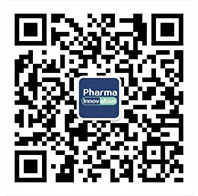Very early research suggests a novel, noninvasive brain stimulation technique guided by ultrasound may improve memory in Alzheimer's disease (AD).
Investigators found that ultrasound-guided transcranial pulse stimulation (TPS) administered to a small number of patients with probable AD improved memory for up to 3 months and that these improvements correlated with improvements in brain networks observed on functional magnetic resonance imaging (fMRI).
However, although encouraging, Alzheimer's experts caution the findings are highly preliminary and not near ready for prime time.
"TPS is a promising new brain therapy worthwhile to be further investigated in larger clinical studies on AD and other diseases like Parkinson's, multiple sclerosis, and stroke," study investigator Roland Beisteiner, MD, associated professor, Department of Neurology, Laboratory for Functional Brain Diagnostics and Therapy, Medical University of Vienna, Austria, told Medscape Medical News.
"We introduce a new add-on therapy which gives patients an additional chance [and] all established therapies may be continued," he added.
The study was published online December 23 in Advanced Science.
Precision Medicine
Existing brain stimulation techniques have several disadvantages. In particular, established electrophysiological brain stimulation techniques are "unable to achieve focal brain activation deep in the brain," said Beisteiner.
Transcranial magnetic stimulation (TMS) lacks precision, while deep brain stimulation (DBS) is an invasive procedure that requires surgical implantation of electrodes.
In contrast, ultrasound-guided TPS can be "spatially distinct, highly focal, and is not restricted to superficial layers of the brain," thereby enabling a "controlled modulation of a specific brain region without unwanted costimulations of other brain areas," the authors write.
Beisteiner noted that TPS also differs from other ultrasound-based approaches.
At present, there are three ultrasound therapies. These include tissue ablation, which is "clinically established"; blood-brain barrier opening, which is still in clinical trials; and brain activation.
The efficacy of noninvasive focal ultrasound in modulating brain function has been demonstrated in animal models and in a small clinical study of 10 health subjects who received median nerve sensory evoked potentials to target the primary somatosensory cortex. These were compared with a sham treatment that used verum stimulation.
Results showed that TPS led to increased neuromodulatory effects, which were dose-dependent as pulses increased. Similar effects were not seen in the sham condition.
TPS is delivered via a handheld ultrasound device over the skull. The device emits a stimulation pulse that is between 3 mm and 5 mm wide and roughly 3 cm long. These "ultrashort" ultrasound pulses (3 ηs) are repeated every 200 ms to 300 ms.
"In the spirit of precision medicine, the area of the brain that is to be activated is very precisely targeted [because] these areas can be situated differently in each patient," Beisteiner said in a release.
"Thanks to a [magnetic resonance] navigation system, the treating neurologist can pinpoint on the screen where the pulse must be delivered and control everything very precisely," he said.
Network Upregulation
The current study included 35 patients (mean age [SD], 70.37 years [8.57]; over half female) with probable AD being treated at two centers.
All participants were receiving "optimized standardized treatments."

